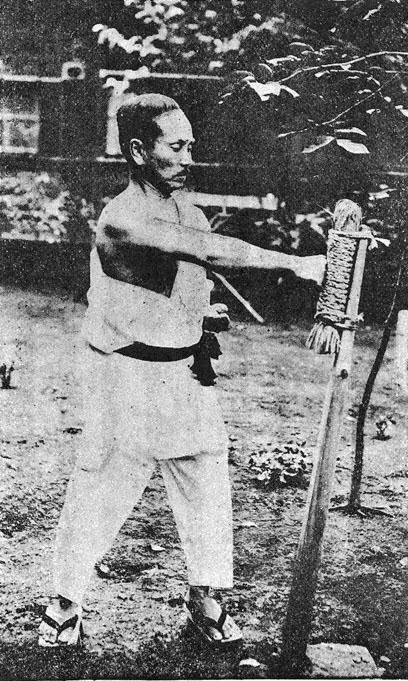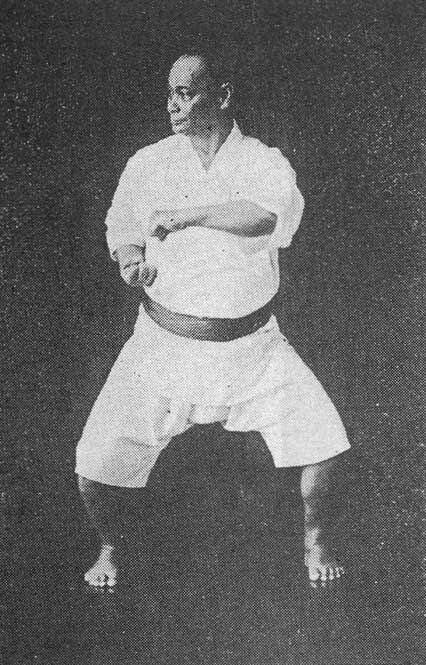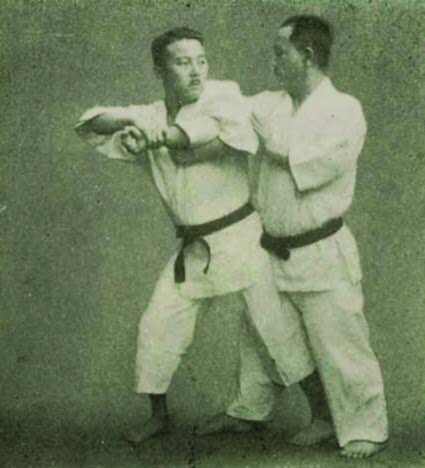Karate Pyjamas
Karate was popularised from Japan and as such is inherently filled with the culture’s language, training attire, tools and ethical practices. We feel it is valuable to include many of these traditions to enhance the training experience of students.
Your training uniform is called a karate-gi (do-gi or keiko-gi). Karate Community students and their affiliates wear a white Karate uniform, where senior organisational members 5th Dan black belt and above can choose to wear a black karate-gi.
All students are to wear their karate uniform to every class. This help us show pride in what we do, while identifying us as a group - a community.
Fun Uniform Fact …
The karate uniform didn’t exist until the 1920’s. Before this karate was practiced in everyday Okinawan attire. The Keiko-gi (training uniform) was developed by Judo founder, Kano Jigoro. When karate was exported to the mainland, Gichin Funakoshi (known as the father of modern karate) adopted this uniform as a standard to help market Ryukyu fighting arts to the Japanese.
Caring for your karate uniform …
We encourage students of all ages to learn how to take care of their karate uniform. Folding laundry is one of those self-care tasks that is deeply connected to helping children learn to take pride in ownership and develop a sense of personal responsibility. The more practice they get, the more confident and competent they will feel, and the more willing they may be to take on other self-care jobs.
A great tip for young people to easily undertake this task is to use the pants as your folding guide. Centre them on the karate top and then fold it around them. Keeping the folds neat and clothes flat will reduce the chance of creases and keep the uniform looking great.
The length of your karate top’s sleeves should be above the wrists and below the elbow. The length of the pant legs should be above the ankle and below the knee. While it is ok to roll up your sleeves and pants, it is better to shorten them to long shorts and elbow length t- shirt. It is advised that younger students hem them and up then let them out as they grow. Adults should have them professionally shortened to the required length. This not only looks nicer but is safer for students.
Karate patch…
Kamon or Mon, are Japanese emblems used to decorate and identify an individual, a family, an institution or business entity.
In older times, these symbols were worn on clothing or decorate buildings and homes. There are many famous examples of Mon, including automotive giant Mitsubishi and imperial crest found on Japanese passports.
Karate schools the world over still use these badges to identify their organisations and schools.
Our patch was designed with the idea to celebrates our now, as well as paying homage to our past. This was helped realised by local artist and friend, Zoe Martin. Our aim was to create something that not only reflected our Japanese heritage, but to also proudly represent our home and our values - we couldn’t think of anything more “Sunshine Coast” than the sun and waves.
We feel this image is a great metaphor of our style of karate, “the path of the hard and soft hands” (Goju Karate-do). Water cab be both soft and yielding, able to take on any shape or move around any structure. It can also be hard and powerful, capable of causing eroding away powerful structures. It can flow slowly and gently or fast and forcefully. Water, in balance with the Sun, gives us life and helps things grow.
The placement of our karate badge is on the left hand chest, as pictured below.
Karate Belts and Colours …
There are white, coloured and black belts.
When a student joins the dojo, they are given a white belt. This is a clean slate or a blank canvas and signifies one’s openness to develop and learn. This induction is called Jukkyū or 10th kyu.
White and coloured belt grades are followed by the suffix Kyu which roughly translates to “grade” or “class”. This progress of development counts from 10 down towards Black Belt, Kuro Obi. Each grade incrementally increases in physical and technical difficulty and promotes progressive improvement in ability. Picture a staircase of goal setting.
Black belt grades are called Dan, meaning “step” or “level”. Shodan means 1st step or most known in English as a 1st degree black belt. This progression counts forward in value.
This promotion to black belt is not the end of one’s learning, in fact, it is far from it. Think more like graduating high school and furthering your education with greater practical and theoretical experience, such as attending a university or place of higher learning.
Generally, each belt level increase consists of these following modules; kihon “basic techniques”, kata “prearranged patterns” and kumite “partner or group work”. Kihon is the practice of our fundamentals. Kata puts those fundamentals into motion creating form. Kumite tests their function under pressure.
Fun Belt Fact …
Like the karate uniform, Kano Jigoro (judo founder) was the inspiration for the belt system and codified method of learning that karate uses today. The belt colours for our school follow an additive method of primary colours – blue, yellow and red – to create the secondary colours below.
White + Blue = blue.
Blue + Yellow = green.
Green + Red = brown.
Brown + RGB = black.
It is important to impart that the colour of one’s belt should be held in modest regard. It is there primarily to keep your keikogi top closed, and your pants from falling!
The colour of the belts enables instructors and fellow students (from any affiliated dojo) to visually surmise a student’s skill progression while also providing students a personal reminder of past achievement. Karate Community uses the following belt colours; white, blue, green, brown and black.
To this day I still enjoy wearing a white belt. It helps me to practice a little philosophy called “Shoshin” - the beginner’s mind, where I embrace the realisation that I too am a student seeking to improve. It encourages me to look at things with an open mind or new perspective. It helps to eliminate ego and place me on the same plane as other students. It removes material significance and focus on the doing rather than the looking-like. It reminds me that everyone has a lesson to teach if you’re open to listening and observing.
“5. Always be taken to learn and guide and remember to remain as innocent as you were as a novice.”
DOJO OATH
How to tie your belt …
Wear your karate top (1). The right side of the uniform ties inside (2), and the left outside (3).
Fold your belt in half (you can mark the middle of the belt with an “x”) (4).
Place the middle of the belt (or “x”) on your belly (5) and wrap around your body (6), crossing at the back.
Bring them around the front placing one side “A” over the other “B” (7).
Tuck side “A” under the belt, passing the belly. Side “A” should be on top, and “B” underneath (8).
Bring “A” over “‘B” (9) and then “B” though the hole you made (10).
Pull and make corrections so the obi is flat (11). The correct knot will look like the figure below.
While tying your belt correctly might seem a small detail, it does in fact have an impact on our psychology. It is the small actions that make up our attitudes and behaviours. By developing a methodical, intentional and present approach to an action, we improve at it.
A video demonstrating belt tying can be viewed here.














